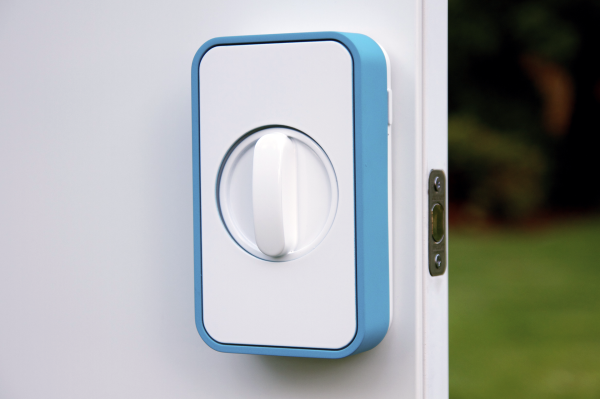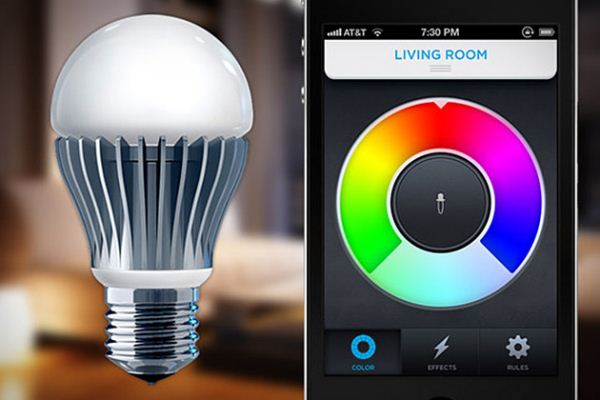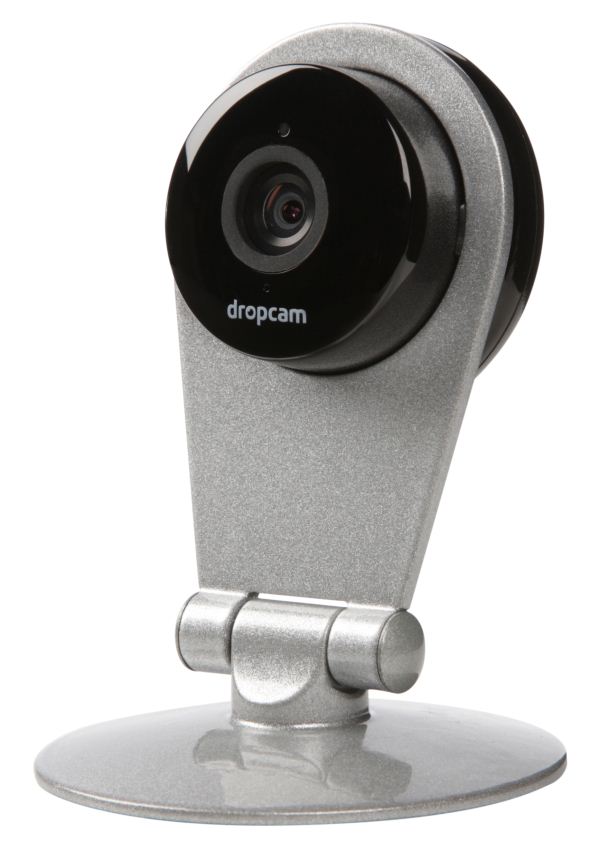Home Automation and the 'Internet of Things'
by Ganesh T S on October 4, 2012 10:30 AM EST- Posted in
- Gadgets
- Home Automation
- Wi-Fi
Crowdfunded initiatives have seen a sudden spurt thanks to the popularity of services such as Kickstarter and IndieGoGo. Since Wi-Fi is familiar to almost everyone with an Internet connection, crowdfunded initiatives involving Wi-Fi and the ‘Internet of Things’ have consistently been able to meet and even comfortably exceed their goals. The ease with which funding has been raised indicates the pent-up market demand for easy to use HA devices using infrastructure already in the hands of the consumers. In this section, we will take a look at some of the miscellaneous Wi-Fi enabled home automation devices which are already in the market / slated to appear soon.
Door Locks
Lockitron is a keyless lock which can be unlocked using a smartphone’s Wi-Fi, Bluetooth or NFC capabilities. It doesn’t replace the conventional lock, but fits over the existing one on the inside of the door while retaining the smartphone communication.
The product is expected to ship in March 2013. It is priced at $149 on pre-order. A mobile website / cloud backend ensures that any smartphone can control the unit, and it actually doesn't need to be connected to the local Wi-Fi network. The consumer doesn’t really need to be tied down to an iOS or Android device. Even older phones can access the unit using text messages. Importantly, the unit is based on the Atmel ATMega microcontroller, which is compatible with Arduino. Simple API endpoints are available, and users can also decide to program the unit themselves.
The LockState Connect LS-DB500i Wi-Fi deadbolt lock is another device slated to appear in the market soon. The company has a video of the unit in operation. Even though the device uses Wi-Fi, it seems to require only 4 AA batteries to operate (like other ZigBee / Z-Wave based devices). Battery life comparison will be quite interesting.
Lighting Control
Simple control of lighting equipment can be achieved through Wi-Fi power switches. However, some applications require dimming / brightness adjustment capabilities. National Control Devices offers a Wi-Fi light dimmer which provides up to 255 different brightness levels controllable over a Wi-Fi connection. However, with a total cost of around $380, it is targeted more towards industrial users rather than home automation. The ZigBee version costs around $320. Wi-Fi may not appear to be cost effective right now, but this doesn’t consider the external ZigBee router / controller needed for operation.
LIFX is one of the recent Kickstarter hits. The product is a Wi-Fi enabled LED light bulb. An interesting aspect to note is that only the master light bulb is Wi-Fi enabled to connect to the wireless network. The other bulbs communicate with each other and the master light bulb itself using a ZigBee 802.15.4 mesh network (which consumes much less power compared to Wi-Fi right now). However, the unit is quite costly, coming in at $69. As this market area garners more manufacturer interest, pricing will become better.
Alarms / Remote Monitoring with Wi-Fi : IP Cameras with Motion Detection
This is one of the classic use cases where Wi-Fi based home automation trumps any other low power alternative. Over the last few years, we have seen a number of Wi-Fi enabled IP cameras meant for surveillance purposes. At AnandTech, we have even reviewed some of them such as the Dropcam Echo, Compro IP70 and IP540. Technology advancements have reached a point where even 720p HD is available in IP cameras such as the Dropcam HD. Ease of use and control over Wi-Fi are some of the aspects that the manufacturers hope to get right in this market area. Almost all IP cameras can be configured to provide feedback based on motion detection (without an explicit motion sensor). Many of these devices can be controlled (Pan / Tilt / Zoom) using a computer or mobile app too.
Low power mesh networking technologies such as ZigBee and Z-Wave are simply incapable of the bandwidth required for video streaming over IP. In this situation, Wi-Fi (or wired Ethernet) is an option. As the control signals can easily piggy-back on the Wi-Fi / Ethernet connection, it really makes no sense to add ZigBee or Z-Wave capabilities to IP cameras. The only reason could be integration with an already existing home automation server, but, as we have taken effort to point out, the whole HA industry is slowly shifting towards a Wi-Fi centric model.













54 Comments
View All Comments
AshuJoshi - Thursday, October 4, 2012 - link
Hi Ganesh,Very extensive article and well covered. A few thoughts, and I think you or your readers have already touched upon this:
1. Bluetooth LE / 4.0 - is pretty important as well. One because many medical devices have adopted BT, and not Zigbee or ZWave or WiFi.
2. ZWave is very popular BUT my concern is that it is controlled by one company.
3. SEP 2.0 is going to be a very important move forward especially because it will work with WiFi, HPAV, and Zigbee.
4. Kickstarter - I noticed that you picked some projects. I think there are three segments to Home Automation - DIY, Luxury and NOW Managed (as provided by the likes of Comcast). Luxury traditionally belonged to the likes of Creston but Control4 is playing a major disruptor now. For the DIY segment - Kickstarter has changed the world. Here is my post on the # of projects on Kickstarter for HA - http://bit.ly/Q02Mk2
5. Service Providers are getting very active in this space - Comcast, Rogers, AT&T, DT etc.
AshuJoshi - Thursday, October 4, 2012 - link
WiFi appears to be a popular choice for powered appliances and as the article talks about Semiconductor providers such as Marvell are providing compelling solutions. The challenge is that every implementation especially if it is from a different semi partner - its implementation in SW is different. That is there is no standard or specification to discover devices on WiFi - each implementation could be different. I am contrasting this with Zigbee because Zigbee has a well-defined protocol on how devices are discovered and controlled by category (Zigbee has its own terminology for all of this).davegravy - Friday, October 5, 2012 - link
Lots of talk about hardware, and a bit of discussion about controllers and host software, but there isn't a lot of software out there that's provides a bridge between all the different protocols and the central brain/logic essential to the smart home.I've been using LinuxMCE (free, open-source) and have been following their development for the past while. Not yet for the technically faint of heart, but there ARE device templates for a large number of different protocols (Z-wave, Insteon, KNX, RS232, IR, X10, various ethernet devices, etc) allowing you to control pretty much any type of HA device. It also controls media and VOIP telecom in your house. The end result is a fully integrated solution between all devices in your home.
Example: Someone rings the door bell. Your porch light turns on (if it is after sundown), your IP cam turns on, its video feed is forwarded to your mobile phone, and (if it knows you are home because your security system is not armed, or by other logic) to the various TVs around your house after powering them on. The video is also recorded to your server. If you were watching TV during this event, it pauses your feed and to show you the front door IP cam.
The possibilities are truly endless with this software, and I have to give it a plug here.
ntspam - Friday, October 5, 2012 - link
I was really hoping that google putting its software creating talent behind home automation was finally going to kick this market mainstream. What a disappointment.jed22281 - Sunday, October 7, 2012 - link
These guys have been ahead of the curve in this area for 4yrs+ now:http://openremote.org/display/HOME/OpenRemote
Truly open, ubiquitous, Home Automation solutions, shame they didn't get a mention.
taltamir - Sunday, October 7, 2012 - link
WiFi controlled lights, thermostat, and power... now your home can be hacked in ways that holliwood only dreamed of.geraldt - Friday, October 12, 2012 - link
Nice article on one of my obsessions. I so want WiFi to be the household communications protocol (actually TcpIp with any mix of wireless, wired CAT5, powerline Ethernet etc. that may be appropriate depending on the devices and controllers).I want a ubiquitous open standard that is well understood. I want two-way comm. I want sufficient bandwidth for video. I want security. I want all my current and future smart devices (desktop, tablet, smart phone, Raspberry Pi, robots, etc.) to be able to participate. I want that common infrastructure so I can incrementally add devices from various manufacturers. I also want the option of writing my own code in smart controllers e.g. PC.
One point the article kind of makes is that common comm protocol is not enough, you need a higher level API for each device that is well documented.
p.s. I think the technology in the new Kindle Paperwhite (touch, front lit, very low power, wifi) could be packaged into a great HA and AV remote. No video is a drawback for some applications like answering the door but still pictures at 1 fps might be fine.
xSaintSinnerx - Wednesday, November 7, 2012 - link
Maybe I'm mistaken but few years ago Microsoft was talking about getting involved in HA business. I believe Gates was talking about it too. MS could easily create standard for HA Wi-Fi and become leader on the market with hardware and software in Windows RT or 8 environment.can you imagine possibilities ... BSoD on your thermostat.
Nomzam - Thursday, November 8, 2012 - link
Yeah the idea and performance are best but there is a security risk of internet.<a href="http://www.squidoo.com/iport-launchport-inductive-... Automation</a>
space31 - Wednesday, August 7, 2013 - link
Some new web remonte power hère : http://www.wifipower.fr